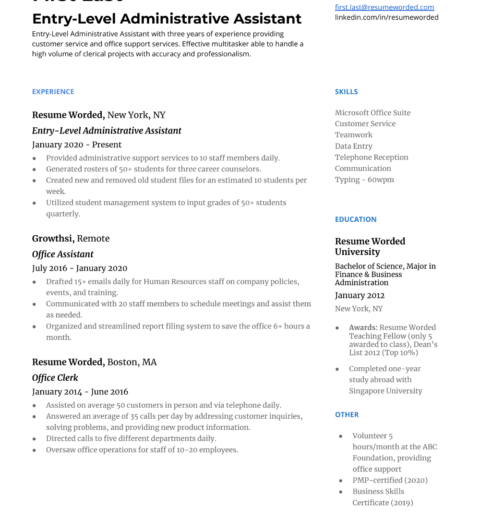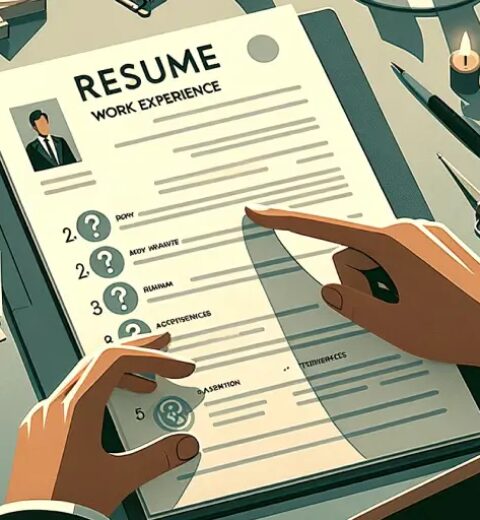Freelance work has surged in popularity, with many individuals opting for self-employment over traditional office roles. However, effectively showcasing this freelance experience on a résumé can be a daunting task. This guide aims to provide a thorough overview of how to incorporate freelance work into your résumé in a professional manner, ensuring you highlight your skills and achievements effectively.
First and foremost, it is crucial to understand that your résumé should underscore your freelance work’s relevance to the position you are applying for. Unlike conventional job experiences, freelance projects can vary in terms of scope and duration. Therefore, it is imperative to curate your freelance portfolio with intentionality, presenting only those experiences that align with your prospective employer’s expectations and industry standards.
When deciding how to structure your freelance experience on your résumé, consider creating a designated section labeled “Freelance Projects” or “Independent Work.” This distinct categorization not only signals your self-employment status but also allows you to showcase the breadth of your capabilities. In this section, you may either opt for bullet points or a concise narrative format to describe your projects.
Each entry should ideally include the project title, the client or company name, the duration of the project, and a brief description that encapsulates your role and contributions. Here’s a more structured breakdown to help you formulate compelling descriptions:
- Project Title: This is the first piece of information that draws attention. Ensure that it reflects the nature of the work undertaken. If it’s a prominent project, you may wish to bold this for emphasis.
- Client or Company Name: If confidentiality agreements allow, include the name of the client. This provides additional credibility to your work.
- Duration: Specify the timeline of the project. It can enhance your credibility by showcasing your ability to manage time effectively.
- Description: Offer a succinct summary of the role you played, highlighting key responsibilities, the skills you deployed, and any notable results or achievements.
For example, instead of stating, “Completed a website design,” articulate your involvement with greater specificity: “Designed and developed an e-commerce website for XYZ Corp, resulting in a 30% increase in online sales within three months.” Such statements not only convey your contributions but also provide quantifiable results, which are instrumental in making your résumé compelling.
Equally important is the use of action verbs. Words such as “engineered,” “conceptualized,” or “orchestrated” provide a dynamic touch to your descriptions, giving the impression of an active and engaged professional. Avoid passive phrasing; instead, aim to convey your contributions with confidence and assertiveness.
Beyond mere descriptions, consider the inclusion of specialized skills relevant to freelance work. For instance, if you have honed skills in project management, digital marketing, or content creation, ensure these are prominently featured in your résumé. An additional “Skills” section can enhance this aspect, allowing employers to quickly identify your areas of expertise.
Furthermore, testimonials or endorsements from previous clients can augment your credibility. If applicable, include a brief quote from a client praising your work, or alternatively, a summary of their feedback that highlights your strengths. Such elements humanize your résumé, lending an additional layer of trustworthiness to your freelance experience.
When discussing freelance work, it is also imperative to address potential concerns regarding job stability. Hiring managers may question your commitment due to the transient nature of freelance projects. Counter this by framing your freelance experiences in terms of growth and professional development. For instance, elucidate how each project contributed to a particular skill set that is relevant to the role you are chasing. This reframes your freelance endeavors as a deliberate choice rather than a mere necessity.
Formatting and Design Considerations
The layout of your résumé plays a pivotal role in how your freelance work is perceived. A cluttered or overly complex design may detract from the professionalism of your résumé. Maintain clean lines and consistent formatting. Utilize white space strategically to enhance readability. Consistency in font choice, size, and bullet point style matters; it ensures your résumé appears cohesive.
Moreover, consider the overall length of your résumé. While a one-page résumé is often recommended for those with less experience, seasoned freelancers may extend to two pages, especially if they have substantial work to showcase. However, conciseness is key; avoid excess verbiage. Each word should serve a purpose, contributing value to your overall presentation.
Additionally, tailor your résumé for each application. Analyze job descriptions meticulously to identify keywords and skills sought by the employer, ensuring these terms are highlighted in your freelance work summaries. This effort demonstrates attention to detail and your interest in the specific position.
In conclusion, adding freelance work to your résumé professionally requires intentionality and strategic presentation. By categorizing your freelance experience, providing detailed descriptions, and showcasing quantifiable results, you amplify your professional narrative. Coupled with effective formatting and tailored content, your résumé can transform from merely a list of experiences to a compelling testament of your skills and capabilities as a freelancer.




